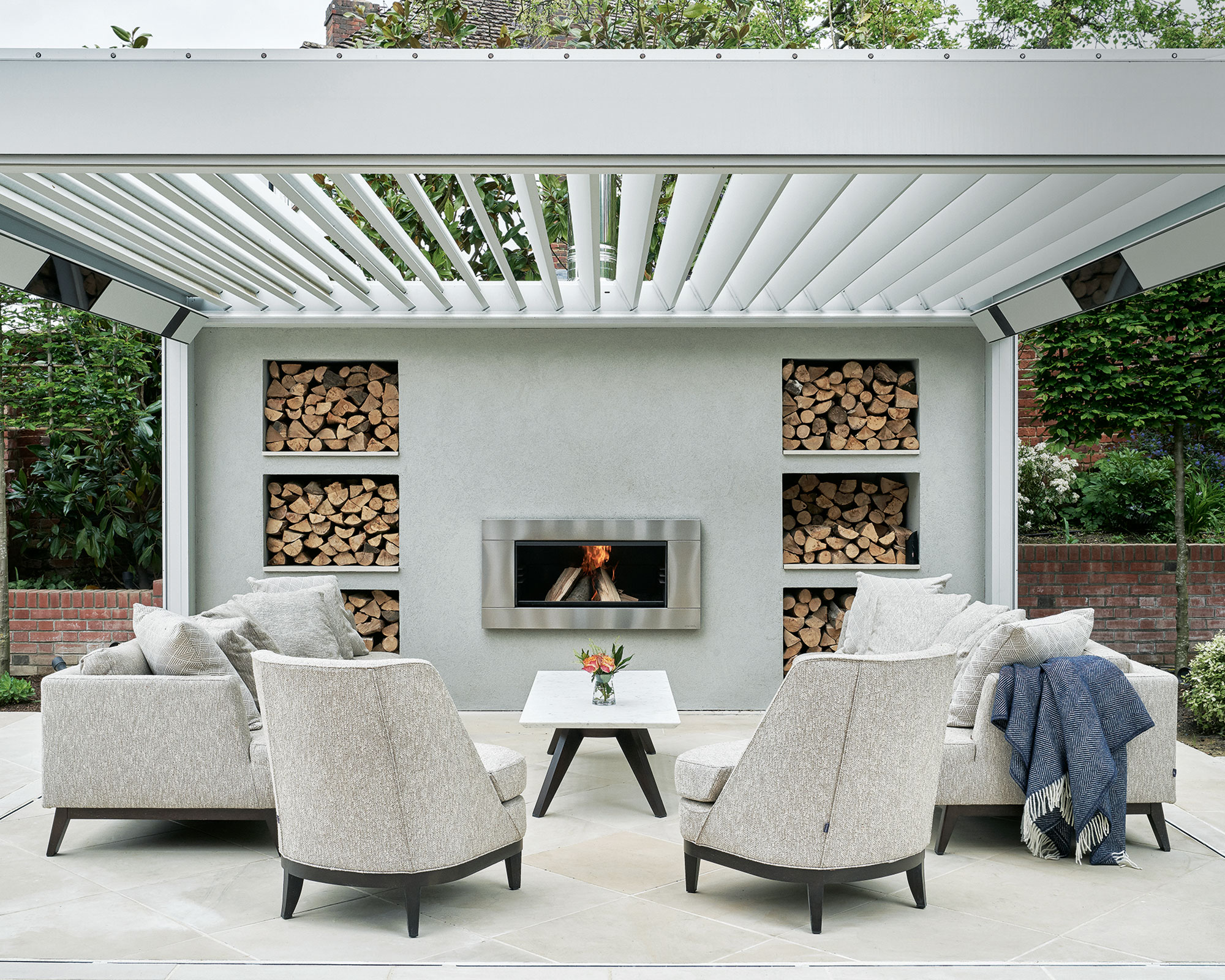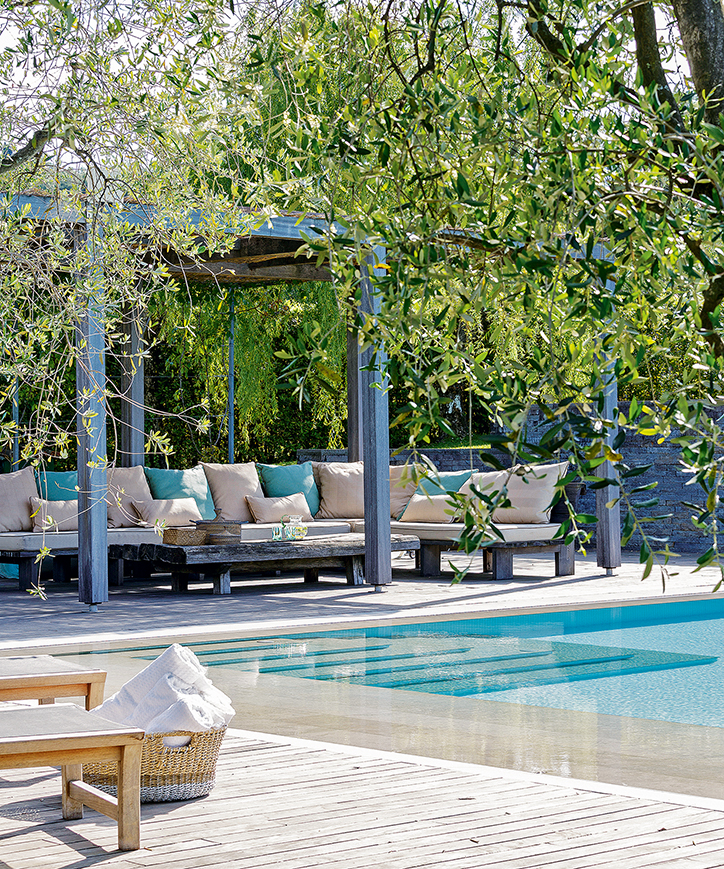Garden designers share 5 reasons to put up a pergola in your backyard
Find out why the professionals recommend a pergola as an attractive and useful addition to your yard


If you want to improve your outdoor space, a pergola is a structure that’s well worth considering. While you might have thought the point of adding one was to create a decorative feature, a pergola is also a functional and useful addition to the space.
Pergola ideas certainly can create an attractive focal point, and add another dimension to backyard ideas. But these are just two among their many attributes, which is why they’re often recommended by garden designers.
We asked the professionals to share the reasons why you might consider a pergola for your backyard to help you explore whether adding one to a patio, deck, or another location is the right move.
5 reasons to consider a pergola for your yard
A pergola isn’t just a pretty face but offers a whole lot of benefits in one attractive feature. ‘Pergolas expand the usable space in your backyard and encourage spending more time outdoors,’ says Joe Raboine, vice president of design at Belgard Outdoor Living. ‘Additionally, they can be completely customized to suit your backyard’s size, shape, and style.’
Pergola roof ideas add to both its beauty and its usefulness, but pergola shade and other benefits can be created using a pergola without a roof, so either is worth your consideration.
Here, garden designers share the reasons you should consider a pergola for your backyard.

1. To create shade
Wondering what is the purpose of a pergola without a roof? It may be decorative, but it can provide shade. ‘During hot summer months, it creates a refreshing area to dine, entertain, or just relax,’ says Bryan Clayton, landscaping expert and founder of GreenPal.
Design expertise in your inbox – from inspiring decorating ideas and beautiful celebrity homes to practical gardening advice and shopping round-ups.
‘By adjusting the beams and incorporating climbing plants or fabric, you can modulate the amount of sunlight filtering through, ensuring UV protection without confining you indoors. For optimum shade, consider the sun’s direction relative to the pergola’s position. The spacing and orientation of cross beams can also determine how much shade you get.’
Sophisticated roof structures can be added. ‘For homeowners with a higher budget, there are louvered pergolas with retractable coverings, allowing you to adjust the level of shade to your preference,’ explains Joe Raboine.
2. To provide privacy
If your yard is overlooked, a pergola is a great way to create garden screening for better seclusion. ‘If you're nestled in an urban setting or in close-knit neighborhoods, privacy can be a cherished luxury,’ says Bryan Clayton. ‘Pergolas, when paired with drapes, latticework, or climbing plants, can offer that private haven. It’s like having a secluded oasis, ideal for quiet moments or special dinners.’
Focus on sight lines, too. ‘When privacy is paramount, we consider the view angles from and to the neighbors,’ says Dani Alexander, principal of Studio AKA. ‘We then orient and space the screening slats in such a way as to cast your eyes away from those views.’

Studio AKA is a landscape architecture and design firm based in Washington, DC, USA that specializes in residential and hospitality projects. Dani, the Founding Principal, has practiced in the United States and Switzerland and is currently a Fellow with the Tory Burch Foundation.
3. To make a framework for climbers
A pergola is also a great addition to the yard because it provides a place to grow some of the best climbing plants.
‘Jasmine, roses, grape vines – the choices are endless,’ says Bryan Clayton. ‘Such plants not only augment shade but infuse a touch of nature, making the space even more inviting. It’s pivotal to pick plants that thrive in your locale and climate. While plants like ivy are easy care for, they can dominate. Flowering vines, on the other hand, might need more tending but reward with beautiful blossoms.’
Adding verticals is also essential for a garden design full of interest. ‘Pergolas introduce a vertical element to largely horizontal gardens,’ explains Bryan. ‘This breaks the visual monotony, drawing eyes upward, often making spaces seem expansive.‘
Focus on the design of the pergola for the best results. ‘The pergola’s height and style should complement other garden features,’ Bryan cautions. ‘One that’s either too tall or short might not yield the desired visual impact.’
4. To zone the space
There’s a further way that a pergola can be a benefit: garden zoning. ‘Pergolas can delineate different areas within a garden,’ says Bryan Clayton. ‘Whether you’re thinking of a dining zone, a lounging spot, or a fire pit region, pergolas can help demarcate these without erecting walls or fostering a sense of isolation.’
Beware of overcrowding the yard, though. ‘Ensure your pergola doesn’t hinder movement or make spaces feel tight,’ he says.
5. To bring year-round value

A pergola isn’t just a welcome feature in the hottest months – providing you get the design right. ‘It is important to consider the seasons when you are designing a pergola for year-round comfort,’ says Dani Alexander.
‘We always look to incorporate deciduous vines as a way of getting good screening from the hot summer sun but letting in light during the winter. We also tend to favor sliding shade systems so that the space is not only adaptable for comfort throughout the seasons, but throughout the day as well.’
Other upgrades are possible. ‘Pergolas offer opportunities to add lighting, sound and heating sources (infrared heaters),’ says Joe Raboine.
FAQs
Does a pergola need to be on concrete?
A pergola should be anchored to a concrete foundation or have concrete footings to keep it secure. A pergola that is not anchored correctly can move in strong winds, damaging the structure itself and running the risk of harm to the yard or your home. Note that what is known as a freestanding pergola is only freestanding in that it’s not attached to the house or another structure. It still needs to be properly anchored.
It’s worth putting up a pergola to create a more beautiful and usable backyard, but it can also be a good investment. ‘A pergola can boost the aesthetic and functional value of any yard, potentially augmenting the property’s market value,’ says landscaping expert Bryan Clayton. ‘It’s a win-win, providing immediate enjoyment and potential financial benefits in the long run. Quality is essential,’ he adds. ‘If this is your reason, prioritize durable materials and expert construction.’

Sarah is a freelance journalist and editor. Previously executive editor of Ideal Home, she’s specialized in interiors, property and gardens for over 20 years, and covers interior design, house design, gardens, and cleaning and organizing a home for Homes & Gardens. She’s written for websites, including Houzz, Channel 4’s flagship website, 4Homes, and Future’s T3; national newspapers, including The Guardian; and magazines including Future’s Country Homes & Interiors, Homebuilding & Renovating, Period Living, and Style at Home, as well as House Beautiful, Good Homes, Grand Designs, Homes & Antiques, LandLove and The English Home among others. It’s no big surprise that she likes to put what she writes about into practice, and is a serial house renovator.